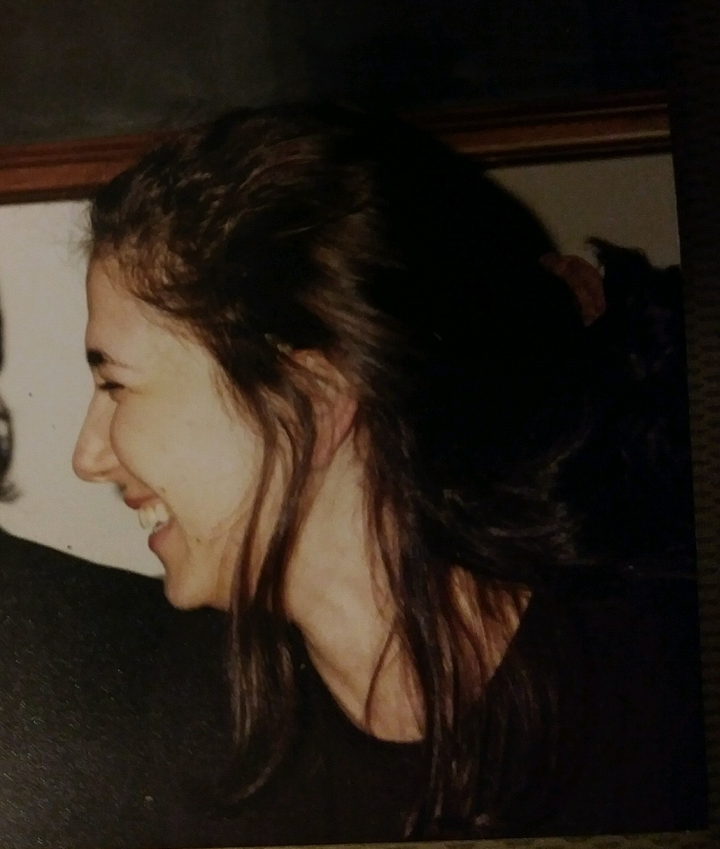
I’m holding back the urge to scream “Wake up!” at Alison Mack, an actor involved in NXIVM (pronounced “Nixium”), the cult depicted in HBO’s documentary series “The Vow.”
I grip the round seam of the sofa cushion while watching her meet her creepy guru, Keith Raniere, for the first time. She cries as he reflects back to her the way she condemns herself by limiting her feelings of bliss to art.
It’s obvious to viewers that he’s seducing her, but I also understand, from my psychotherapy training, that he is mirroring her, a process in which the therapist reflects something back to the client that the client hasn’t been able to articulate. The stark relief of being seen is intensely powerful; it is the fulfillment of a need the client didn’t know existed but had been missing all along.
I also understand how good it feels to find a teacher who sees you. In the 1990s, I was accepted as a full-time sevite — a staff member who does selfless service — in exchange for room and board at the Siddha Yoga ashram in the Catskills.
Siddha Yoga is a set of spiritual practices aimed at achieving self realization, brought from India to the West in the 1970s by an enlightened master named Baba Muktanada. After a few years of chanting, selfless service and meditating, I became closer to Muktanada’s successor Gurumayi, a powerful guru said to be a Siddha: a realized master who awakens spiritual energy in her devotees through a process called Shaktipat.
I don’t realize that while watching “The Vow,” the knot in my belly and the surge of saliva on my tongue signal flashbacks to my ashram experience. But when two refugees from the NXIVM cult track down Catherine Oxenberg, a former actor, to warn that her daughter was in danger of being physically branded as part of a sex slave ring within NXIVM, it hits.
My husband, looking at Oxenberg’s pained face, says, “That’s what your mother must have felt.”
I swallow hard.
I feel for Oxenberg, and for my mother back then. I remember being the same age as Oxenberg’s daughter, India, when I discovered Siddha Yoga. I was mysteriously attracted to an older grad student who didn’t meet any of my usual romantic requirements. He was tall and thin and quiet. On the second date at his apartment, I was fascinated by his meditation corner and a picture of Gurumayi, with her big brown eyes and stunning smile.
“That interpretation felt so real to me. But if I were watching a documentary about it today, I might see it as a ploy: the charismatic leader preying upon my insecurities, driving me deeper into the dogma and the need to keep coming back.”
I couldn’t articulate how much longing for mirroring, for intense contact and connection had built up inside me. My mother — a smart, talented, capable artist like Catherine Oxenberg in “The Vow” — assumed that she knew me, but she missed so much about who I was. Even when we were in the same room, I felt as if she was looking over my head, at someone else.
With Gurumayi and the Siddha Yoga community, I felt seen for who I was. India Oxenberg shut out her mother for meddling, for trying to save her, and I get it. I did the same. I loved my mother, but I loved ashram life more.
By the time I was exposed to Gurumayi, I’d been searching for a mystical connection, but nothing stuck. Watching her on a video at the Siddha Yoga Meditation Center of Chicago where the college boyfriend had invited me, she was beautiful, funny. She sat straight-backed as a toddler and wore flowing red robes, but she was modern and accessible.
When she made reference to the company we keep — television, drugs, superficial friends — and how rarely we keep the company of the “truth,” I teared up.
When I met Gurumayi in real life for the first time, she didn’t peer into me like Kieth Raniere. She sat on her platform blessing hundreds of devotees, and practically ignored me. Here I was, beaming, so excited to finally meet her. Her disinterest was so apparent that the sevite who introduced us was embarrassed for me. I was heartbroken. But this was a master.
Back then I understood her behavior as a test, a lesson: Since I’d just had a transcendent meditation experience at a course, I was being challenged to remember that the outer relationship with the master is not the one that counts.
That interpretation felt so real to me. But if I were watching a documentary about it today, I might see it as a ploy: the charismatic leader — sensing how hooked I was — preying upon my insecurities, driving me deeper into the dogma and the need to keep coming back.
Freud coined the term transference to refer to the phenomenon that happens when a person redirects feelings about one person, maybe even themselves, on to another.
When we fall in love, for example, we usually transfer the role of savior, as well as expectations and unmet needs from our parents, onto our lover. Feeling mirrored by someone can trigger a regression, and result in a transferring of power, bestowing the seer with all kinds of parental and godly attributes.
In therapy, transference can be useful, because the therapist is supposed to catch it and call the patient out, handing their larger-than-life projections back to them. But in spiritual practice, politics and cults, transference is cultivated.
In DOS, the sex slave part of NXIVM, before the branding ceremony, women sign up to be another woman’s slave. An ex-cult member described how initially responding to this person as “master” felt empowering.
I often felt joyous after performing countless menial tasks like chopping and dishwashing for no money; unencumbered, as one might feel after an intense aerobic workout. I woke up at 4:30 a.m. for a 180-stanza Sanskrit chant that lasted 90 minutes, resulting in an energetic buzz. I took care of an injured Swami and worked as an office manager for the fundraising department. And I lived for my interactions with the Guru.
What few words we shared — often harmless questions such as “Are you better?” asked with a joyful yet pointed tone — I took to heart and poured over for layers of meaning.
At darshan, the time when you bowed down before Gurumayi to get blessings, she often looked right into me with timeless gazes that expanded my sense of being. On my knees, I would offer her whatever it was I was feeling that day, and it felt good to be humble in the face of her majesty. Watching ”The Vow,” all those feelings suddenly seem ridiculous.
One afternoon, after living at the ashram for more than a year, I sat in a room with 50 other ashram staff members. The New Yorker was soon publishing an article accusing Baba Muktananda, Gurumayi’s charismatic guru who spread the entire Siddha Yoga practice and enterprise from India to the West, of molesting young girls. And my beloved Gurumayi was accused of stealing the guruship from her brother, who had been named co-guru but then mysteriously disappeared from the limelight. It was sordid.
They were “just accusations,” the vicious revenge tactics of disgruntled ex-devotees, the swamis assured us, as I in turn tried to assure myself. But I felt in my gut that some of these accusations were true.
I felt something inside me break free. I had gained so much from my practice: a deeper sense of self, a set of practices that were reliable, a wiser perspective, a new mother. I wanted to preserve what I had received, even as betrayal coursed through my blood like liquid fire.
I still flinch at the word “cult.” I looked for answers about my experience in Netflix’s “Cults Explained,” which features a psychologist who left Siddha Yoga. Reflecting on the “waves of love” he felt there, he said he’s since realized that it was all made up. Was it? Was it just transference?
Unlike the victims in NXIVM, I didn’t give secrets as collateral or thousands of dollars to Gurumayi. I wasn’t talked out of meeting my family for therapy, which I did finally, after growing sick and tired of pushing my parents away, fielding their concerned and distant phone calls. I wasn’t talked out of leaving the ashram, which I also did, not just because of the insidious allegations but because I’d become bored with the repetition of ashram life. No one pursued me with legal action for leaving, and I wasn’t branded or offered up as a sex slave like the women in “The Vow.”
But other women at the ashram weren’t as lucky. Siddha Yoga was accused of having negligent, hypocritical leadership which included, according to several victims, harassment and sexual molestation. Watching ”The Vow,” it all comes back. I wonder, what is the responsibility of being one of the lucky ones?
On “Cults Explained,” experts say people susceptible to falling in with cults are in a vulnerable place, in some sort of transition. It is said with a slightly pitying tone, as if longing is a liability, isolation is a choice, or hard times are a personal weakness.
Was I in a cult? Who knows. I got a lot out of it. I know who I am, and I still meditate on occasion to find stillness. When I have dreams with Gurumayi, I wonder what part of myself she represents. Other times, like when contractors found a picture of her underneath the stove in the new home I hadn’t yet lived in, it appears we are still connected.
What I do know: People, therefore leaders, are always flawed. Some are sick, evil, power hungry. Others mean well. I wonder if there is a way to both surrender to the search for fulfillment, and keep our eyes open to the character of who is guiding us.
Do you have a compelling personal story you’d like to see published on HuffPost? Find out what we’re looking for here and send us a pitch!
